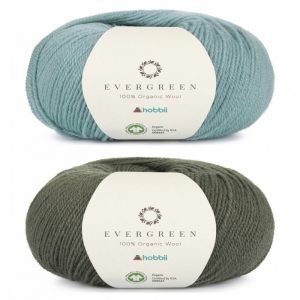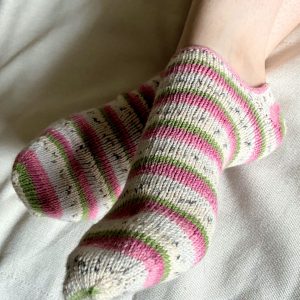When it comes to dyeing yarn, there are a lot of different factors you need to take into account. The type of yarn you use will affect the final color, as will the method of dyeing and the dye itself. The end result depends on:
- Fiber and base color
- The manufacturing process of the bare yarn (e.g. is the yarn superwash-treated)
- Dyes you use
- Dyeing method
Dyeing Methods
The dyeing methods are out of the scope of this article but you can learn them for instance on the following two Craftsy classes taught by fiber artist Sarah Eyre.
- Professional Yarn Dyeing at Home: You’ll learn the dyeing best practices, how to troubleshoot slip-ups, where to find color inspiration and how to start mastering this fun, rewarding technique. By the end of class, you’ll be able to safely create vibrant yarns at home.
- Next Steps in Yarn Dyeing: You’ll learn to create gradient, self-striping and hand-painted yarn as you work with a variety of materials including sock blanks, raw fiber and more.
Animal Fibers
Animal fibers, such as lamb wool, alpaca, cashmere, angora, and silk, are known for their ability to take dye very well. When you’re dyeing yarn made from animal fibers, you can expect the colors to be very rich and vibrant. Additionally, these yarns will often retain their color well over time.
However, it’s important to note that you need to be quite careful when dyeing animal fibers so that you won’t accidentally ruin the yarn. For instance, wool easily felts if you don’t use a gentle heat source and handle the yarn carefully while it’s wet.
Wool
Wool is one of the most popular fibers for dyeing, and for good reason. It’s absorbent, so it takes color well, and it’s also relatively easy to work with. If you are just getting started go with wool.
When selecting the best yarn for your needs take into account the following things:
- Fiber Color: Wool comes in different natural shades depending on the animal color such as white, grey, and brown. If you dye white wool you get deeper more saturated colors but if you dye grey wool the final color will be more subdued.
- Care: Superwash wools can take more heat and agitation and thus they are easier to get started with.
- Dyes: For animal-based fibers, you need to use acid or natural dyes.
- Price: If you are just getting started practice with cheaper basic yarn rather than with the finest cashmere.
Silk
Like wool, silk is an absorbent fiber that takes color well. With acid dyes, you’ll get rich, vibrant colors that will last over time. Silk dyed with natural dyes will have a more muted, subtle color palette.
One downside to silk is that it’s a bit more delicate than wool, so you need to take care when handling it while wet. It’s also more expensive than the basic wools.
Plant Based Fibers
Plant-based fibers, such as cotton, linen and bamboo, can also be dyed. These fibers are less absorbent than animal fibers, so the colors will be less rich and vibrant. Additionally, plant-based fibers are more likely to fade over time. However, they can still produce beautiful results when dyed correctly.
Plant-based fibers need to be dyed with fiber-reactive dyes.
Manmade Synthetic Fibers
Manmade synthetic fibers, such as polyester and acrylic can be dyed but they don’t hold the color well so I recommend you to stick with natural plant or animal-based fibers.
Fiber Blends
Dyeing a yarn that has two different fiber types e.g. merino (animal) and cotton (plant) can add a layer of complexity to the process. In that case, you need to use all-purpose dyes that contain both acid dyes for the animal fiber and direct dyes for the plant-based fiber. However, you can get beautiful vibrant results because the fibers take dye differently. If you are blending two fibers from the same group such as silk and mohair or alpaca and silk the process will be easier.
Where to Buy Yarn for Dyeing?
There are many great places to buy yarn for dyeing. There are several manufacturers that sell bare yarn for dyeing or then you can buy the natural non-dyed colors of your favorite yarn and dye over them. For instance, KnitPicks has a great selection of good-quality undyed yarns and dyes.










